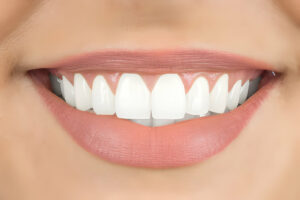Table of Contents
ToggleIntroduction: Embracing the Nordic Way of Eating
Have you ever been curious about how the folks from Nordic countries like Norway, Denmark, Sweden, Finland, and Iceland maintain their health and fitness in such cold, dark climates? The answer might just surprise you—it lies in their simple, nutrient-rich diet, which hinges on the availability of local, seasonal, and natural produce. More than just a fleeting trend, the Nordic diet is a centuries-old tradition that mirrors the culture and lifestyle of these regions. It shares many similarities with the well-known Mediterranean diet but stands out with its distinct characteristics and advantages. In this blog post, we’ll delve into the essence of the Nordic diet, including its fundamental foods and the multiple health benefits it offers. Plus, we’ll share handy tips on how you can incorporate this wholesome diet into your life, regardless of your proximity to Scandinavia. Whether your goals include weight loss, enhanced gut health, or simply adopting a more sustainable and pleasurable eating habit, the Nordic diet could be the ideal option for you. Join us as we explore how to tap into the remarkable benefits of the Nordic way of eating!

Discover the Foundations of the Nordic Diet
The Nordic diet transcends a mere list of foods to embrace or avoid. It embodies a dietary approach that mirrors the culture, values, and environmental consciousness of the Nordic nations. This section delves into the essence of the Nordic diet, uncovering the philosophy it stands on and the crucial elements that shape it.
What Constitutes the Nordic Diet?
Rooted in centuries-old principles from Norway, Denmark, Sweden, Finland, and Iceland, the Nordic diet was brought to life in 2004. This initiative, spearheaded by nutritionists, scientists, and chefs, aimed to combat rising obesity levels and unsustainable farming practices within these regions. Centering on whole, locally sourced, seasonal, and natural foods, it shares similarities with the Mediterranean diet but boasts unique features and advantages.
The Philosophy Behind the Nordic Diet
The Nordic diet extends beyond mere nutrition to encapsulate sustainability, quality, and the joy of eating. Its core philosophy promotes living in harmony with nature, respecting our environment, and celebrating the diversity and richness of Nordic culinary traditions. It encourages the social and cultural aspects of dining, including sharing meals with loved ones, cooking from scratch, and savoring the flavors and textures of fresh ingredients.
Key Components: Whole Grains, Berries, and More
The diverse array of foods within the Nordic diet is rich in protein, complex carbohydrates, and healthy fats. The main components include:
- Whole grains, like rye, barley, and oats.
- Fruits, particularly berries such as blueberries, lingonberries, and cloudberries.
- Vegetables, with a focus on root varieties like beets, turnips, and carrots, along with leafy greens such as kale, cabbage, and spinach.
- Fatty fish, including salmon, tuna, sardines, and mackerel, are known for their omega-3 fatty acids and vitamin D content.
- Low-fat dairy products, like Skyr yogurt, are a good source of protein and calcium.
- Legumes, including peas, beans, and lentils, offer high fiber and plant-based protein.
- Nuts and seeds, such as almonds, walnuts, and flaxseeds, are packed with healthy fats and antioxidants.
- Canola oil is favored for its low saturated fat content and high levels of monounsaturated fat and vitamin E.
In addition, the Nordic diet reduces the intake of red and processed meats, butter, and sweets, which are typically high in saturated fats, sodium, and added sugars. It instead advocates for the consumption of game meats like venison, rabbit, and bison, offering leaner and more environmentally sustainable options.
Benefits of Adhering to the Nordic Diet
The Nordic diet, renowned for its delicious flavors and satisfying meals, stands out for its numerous Nordic diet benefits; not only for its culinary appeal but also for its health and environmental advantages. In this section, we will discuss the traditional Nordic foods at the heart of Nordic cuisine and the key advantages of the Nordic diet, highlighting its contributions to heart health, and disease risk reduction, including the benefits of the Nordic diet for gut health, environmental sustainability, nordic diet weight loss achievements, and nutritional balance.
Healthier Heart and Lowered Risk of Diseases
Foremost among the Nordic diet’s advantages is its capacity to enhance heart health and mitigate the risk of chronic illnesses like type 2 diabetes, cancer, and heart disease. This diet emphasizes foods rich in anti-inflammatory, antioxidant, and cholesterol-lowering properties such as berries, fatty fish, nuts, seeds, and canola oil. It also minimizes foods high in saturated fats, sodium, and added sugars that can exacerbate inflammation and elevate blood pressure. By adopting the Nordic diet, you not only reduce these disease risk factors but also pave the way for a longer, healthier life.
Environmental Sustainability of the Nordic Diet
Another significant aspect of the Nordic diet is its environmental sustainability. By prioritizing locally sourced, organic, and seasonal foods, it significantly cuts down on carbon footprints and the use of harmful pesticides and fertilizers. Furthermore, the diet’s emphasis on plant-based foods over red meat plays a crucial role in reducing greenhouse gas emissions and conserving water resources. Thus, adhering to the Nordic diet not only nurtures your health but also supports the well-being of our planet, contributing actively to the battle against climate change.
Weight Management and Nutritional Balance
The Nordic diet also shines in its ability to assist in weight management and ensure a nutritionally balanced diet. Its high content of fiber, protein, and healthy fats helps in maintaining satiety and curbing overeating and cravings. Additionally, the diet’s diversity provides an ample supply of vitamins, minerals, and phytochemicals that bolster your immune system, metabolism, and overall health. Embracing the Nordic diet aids in keeping a healthy weight and achieving a balanced diet without feeling restricted.
Implementing the Nordic Diet: Practical Tips for Beginners
If you’re intrigued by what is the Nordic diet and looking to give it a try, you might require a healthy eating guide for beginners. Wonder no more! This section serves as your beginner’s guide to the Nordic diet, offering actionable tips on incorporating essential foods into a Nordic diet meal plan, pinpointing which foods to steer clear of for the best health outcomes, and providing you with a one-day sample meal plan to set you on the path of your Nordic diet adventure.
Essential Foods to Include in Your Meals
Adopting the Nordic diet means making room for the following items in your daily food intake:
- Breakfast: Kick off your day with a hearty bowl of oatmeal or slices of rye bread paired with low-fat cheese or Skyr yogurt, complemented by a serving of fresh or frozen berries, nuts, and seeds for a burst of flavor and nutrients.
- Lunch: Savor a fulfilling soup or salad enriched with whole grains, legumes, and a variety of vegetables. Incorporate a source of protein such as fatty fish, lean meat, or eggs. Opt for canola oil, vinegar, and an assortment of herbs to dress your salad.
- Dinner: Opt for a simple yet satisfying plate of roasted or steamed vegetables, and whole grains, alongside fish or game meat, tastefully seasoned with herbs, spices, and a squeeze of lemon juice. Best to avoid creamy sauces and butter for a healthier option.
- Snacks: For those hungry pangs between meals, reach for fruits, nuts, seeds, or a piece of dark chocolate for a quick bite. Alternatively, consider a glass of low-fat milk or a soothing cup of herbal tea.
Foods to Avoid for Optimal Health Benefits
To maximize the health benefits of the Nordic diet, try to limit or eliminate these foods from your diet:
- Processed foods: Avoid fast food, frozen meals, canned goods, chips, cookies, cakes, candies, and sugary sodas, which are generally high in calories, fats, sugars, salts, and additives, but low in essential nutrients and fiber.
- Red meat: Cut down on beef, pork, lamb, and processed meats like bacon, ham, and sausages, known for their high levels of saturated fat, cholesterol, and sodium, which could elevate the risk of heart disease and cancer.
- Butter: Given its high saturated fat and calorie content which could increase cholesterol levels, swap it out for canola oil. Canola oil is not only lower in saturated fat but also rich in monounsaturated fat and vitamin E.
- Alcohol: It can contribute unnecessary calories and sugars to your diet, disrupting liver function and metabolism. Should you choose to consume alcohol, limit intake to one drink per day for women and two drinks per day for men, favoring red wine for its antioxidant properties over beer or spirits?
Sample Meal Plan to Kickstart Your Nordic Diet Journey
Here’s a one-day meal plan to ease you into the Nordic diet:
- Breakfast: A bowl of oatmeal adorned with blueberries, walnuts, and Skyr yogurt, washed down with a cup of green tea.
- Lunch: A comforting bowl of lentil and vegetable soup served with rye bread, paired with a glass of low-fat milk.
- Dinner: A dish of salmon accompanied by roasted beets, carrots, and potatoes, alongside a green salad dressed in canola oil, capped off with a glass of red wine.
- Snacks: An apple with almond butter and a piece of dark chocolate for those in between meal cravings.
Conclusion: Your Path to a Healthier Lifestyle with the Nordic Diet
The Nordic diet stands out as a nutritious approach to eating, promising numerous benefits for both your health and the planet. It prioritizes whole, locally sourced, and seasonal foods that are deeply ingrained in the cultural and traditional fabric of Nordic countries. Embracing the Nordic diet can lead to improved heart health, reduced risk of chronic diseases, enhanced environmental sustainability, effective weight management, and a well-rounded nutritional intake.
Interested in adopting the Nordic diet? Begin by incorporating a variety of whole grains, berries, vegetables, fatty fish, low-fat dairy products, legumes, nuts, seeds, and canola oil into your diet. To gain an understanding of Nordic recipes for beginners, minimize or eliminate processed foods, red meat, butter, and alcohol consumption. You can follow the provided sample meal plan or craft your own tailored to your tastes and what’s available to you, making it an excellent healthy eating guide for beginners. The Nordic diet offers flexibility and enjoyment, allowing you to adjust it to meet your specific needs and objectives.
This blog post aims to motivate you to explore the Nordic dietary lifestyle, unlocking its vast potential for your health. The Nordic diet is beneficial not just for you, but also for the environment and those around you. So why wait? Embark on your journey to a Nordic diet today and step into a healthier, more fulfilled life!
FAQ
What foods are in the Nordic diet?
The Nordic diet features a variety of whole, locally sourced, seasonal foods including whole grains, berries, root vegetables, fatty fish, low-fat dairy, and legumes. It shares similarities with the Mediterranean diet but prefers canola oil over olive oil.
Can you eat eggs on the Nordic diet?
Yes, eggs are permissible in the Nordic diet, albeit in moderation. They’re a good source of lean protein, although the diet primarily focuses on fish and plant-based protein options.
What are the carbs in the Nordic diet?
In the Nordic diet, carbohydrates mainly come from whole-grain products like cereals, crackers, and breads made from barley, oats, and rye. These are high-quality carbs, loaded with fiber and essential nutrients.
Is the Nordic diet successful?
The Nordic diet has been successful in achieving short-term weight loss due to its high protein and fiber content, which help you feel full and reduce overall calorie intake. However, its sustainability for long-term weight maintenance is debatable, as there’s a possibility of weight regain over time.


















